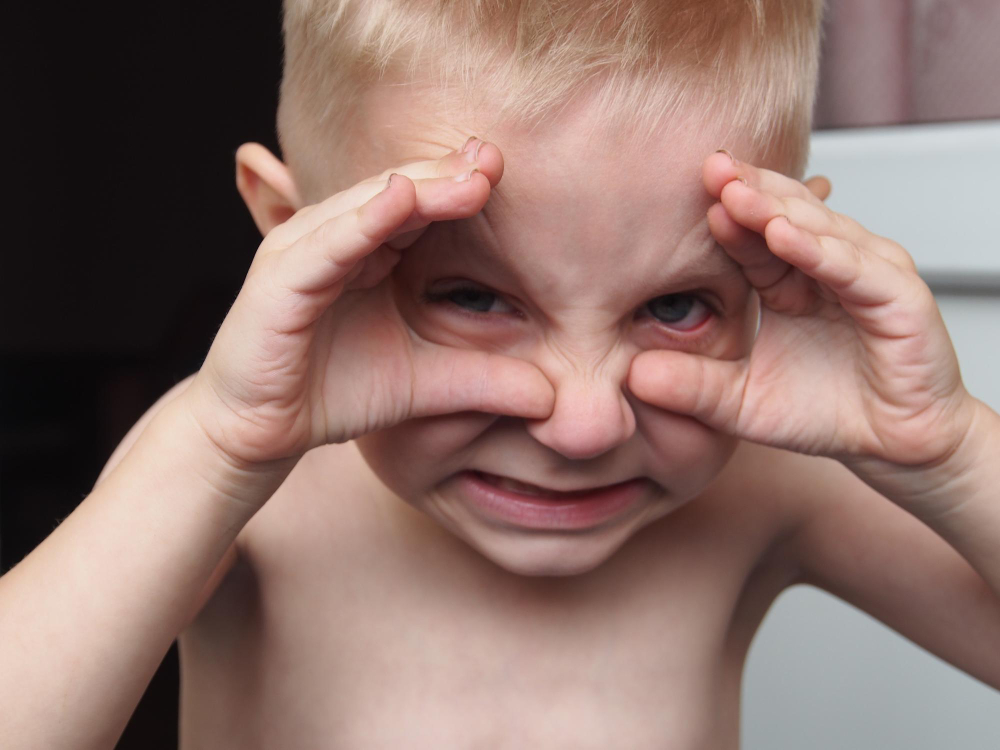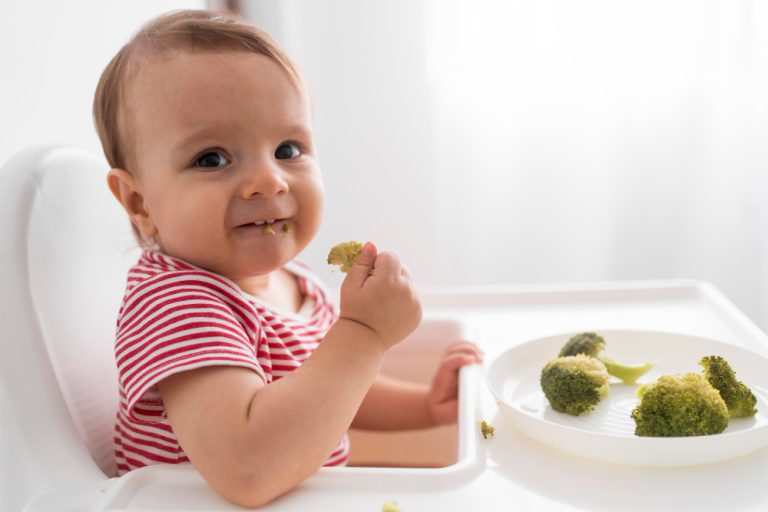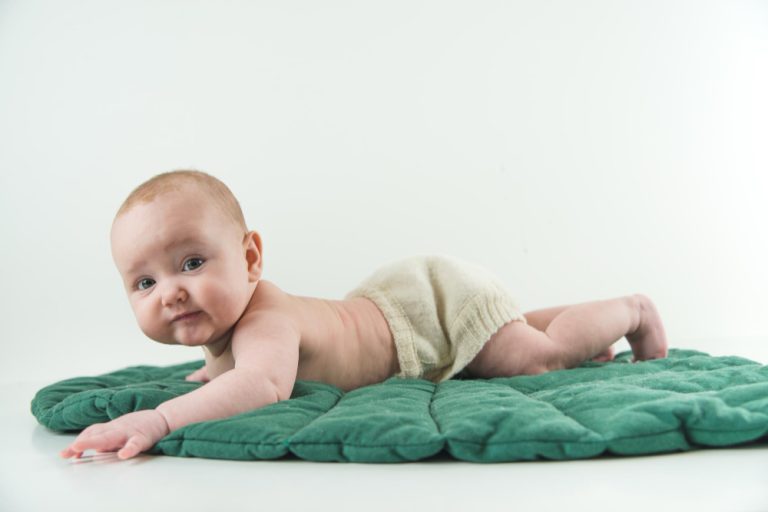How to Treat Pink Eye in Babies: Signs, Causes, and Remedies
Have you noticed your little one rubbing their eyes incessantly or waking up with eye-crust? Pink eye in babies, also known as conjunctivitis, can be a common yet uncomfortable eye condition that requires prompt attention and care. As a parent, witnessing your baby in discomfort can be distressing, but fret not; understanding how to treat pink eye in babies can help you alleviate their distress effectively.
In this comprehensive guide on treating pink eye in babies, we delve into the crucial aspects of this eye condition. From identifying the telltale signs of pink eye in infants to exploring the underlying causes, we aim to equip you with the knowledge needed to address this issue proactively.
Additionally, we’ll discuss the most effective remedies and preventive tips for managing pink eye in babies and preventing its spread.
Stay informed, stay prepared, and most importantly, ensure your little one’s eye health with our expert insights on how to treat pink eye in babies.
What is pink eye?
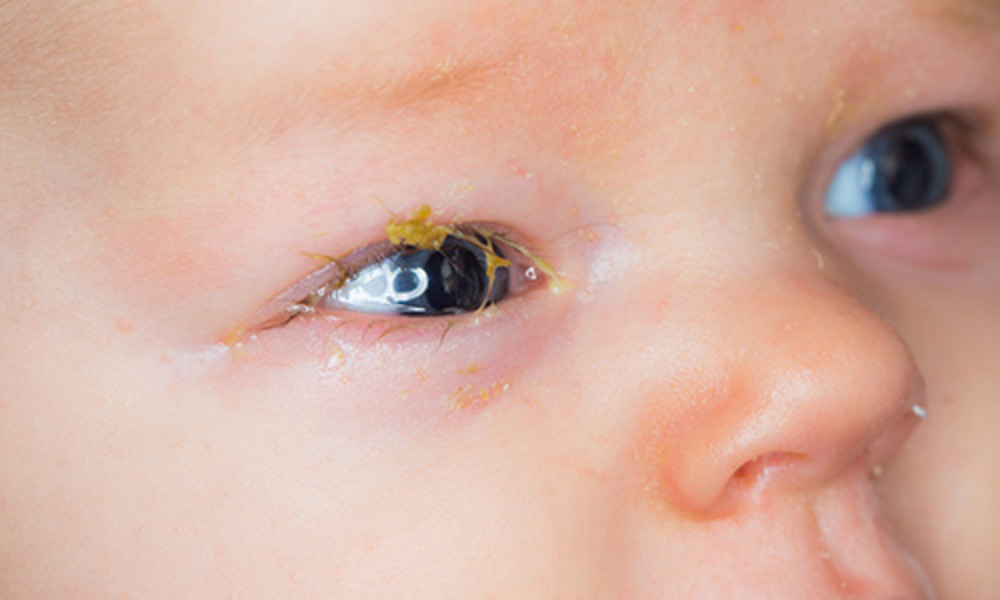
Pink eye, also known as conjunctivitis, is a common eye infection that affects babies and toddlers. It is characterized by inflammation of the conjunctiva, the thin, transparent layer that covers the white part of the eye and lines the inner surface of the eyelids.
Causes of pink eye
Pink eye in babies can be caused by various factors, including viral and bacterial infections, allergies, and exposure to chemical irritants.
- Viral infection
Viral pink eye is often associated with respiratory or common cold viruses. It can be highly contagious and spreads easily through hand-eye contact or contact with contaminated surfaces.
- Bacterial infection
Bacterial pink eye is usually caused by bacteria such as Staphylococcus aureus or Streptococcus pneumoniae. It can result from poor hand hygiene or the use of contaminated items like towels or pillows.
- Allergies
Allergic pink eye occurs when the eyes react to allergens such as pollen, dust mites, or pet dander. It is non-contagious and often accompanied by other allergy symptoms like itching, sneezing, and a runny nose.
- Chemical irritants
Pink eye can also be triggered by exposure to chemicals like chlorine in swimming pools, irritants in smoke, or certain cosmetics. This type of pink eye is usually not contagious.
Understanding the cause of pink eye is important for determining the appropriate treatment and taking necessary precautions to prevent its spread.
Causes of Pink Eye in Babies and Toddlers
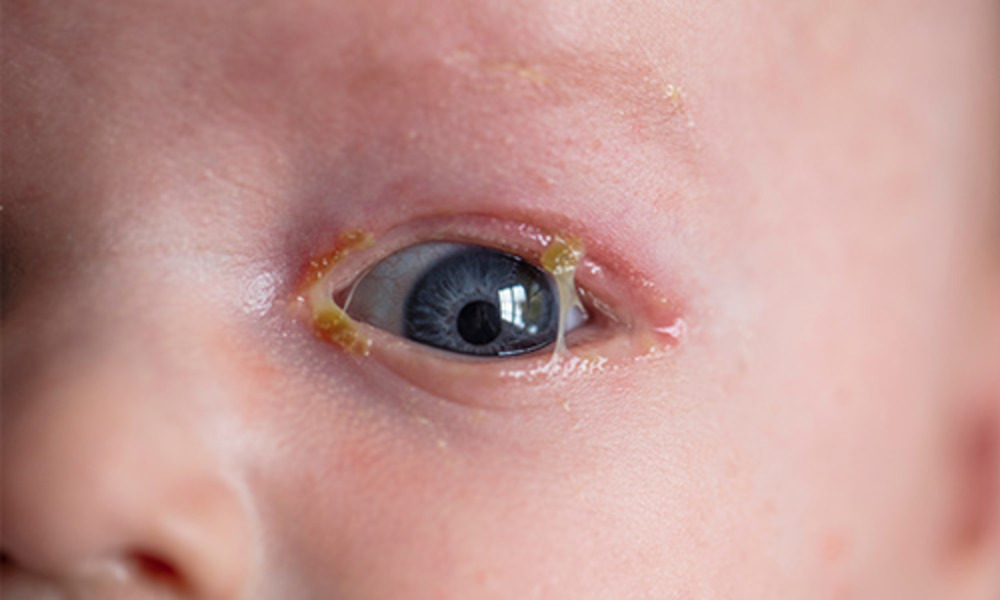
Pink eye, also known as conjunctivitis, is a common eye infection that affects babies and toddlers. It can be caused by several factors, including viral and bacterial infections, allergies, and exposure to chemical irritants.
Understanding the different causes can help parents identify and address the underlying issue effectively.
Viral Infections
- Viral pink eye is a highly contagious form of conjunctivitis.
- It is often associated with common viral infections, such as the common cold or flu.
- The most telltale symptom of viral pink eye is the presence of watery discharge from the eyes.
- It can be accompanied by redness and swelling.
- Viral pink eye usually resolves on its own within one to two weeks and does not require specific treatment.
Bacterial Infections
- Bacterial pink eye is caused by bacterial pathogens, such as Staphylococcus or Streptococcus.
- This type of infection often results in a thicker discharge, which can be yellow or green in color.
- Bacterial pink eye may cause more severe symptoms, including eye redness, swelling, and discomfort.
- Treatment typically involves the use of antibiotic eye drops or ointments prescribed by a healthcare professional.
Allergies
- Allergic pink eye, also known as allergic conjunctivitis, occurs when the eyes come into contact with allergens such as pollen, pet dander, or dust mites.
- It can cause redness, itching, and watering of the eyes.
- Allergic pink eye is not contagious and can often be managed with antihistamine eye drops or oral medications to alleviate symptoms.
Chemical Irritants
- Exposure to chemical irritants, such as harsh cleaning products, smoke, or chlorine in swimming pools, can lead to pink eye in babies and toddlers.
- This form of conjunctivitis is usually characterized by eye redness, pain, and irritation.
- Washing the affected eye with clean water and using soothing eye drops can help alleviate the symptoms.
It’s important to consult a healthcare professional to determine the exact cause of pink eye in babies and toddlers. Proper diagnosis can guide appropriate treatment and prevent the spread of infection.
Is pink eye contagious?
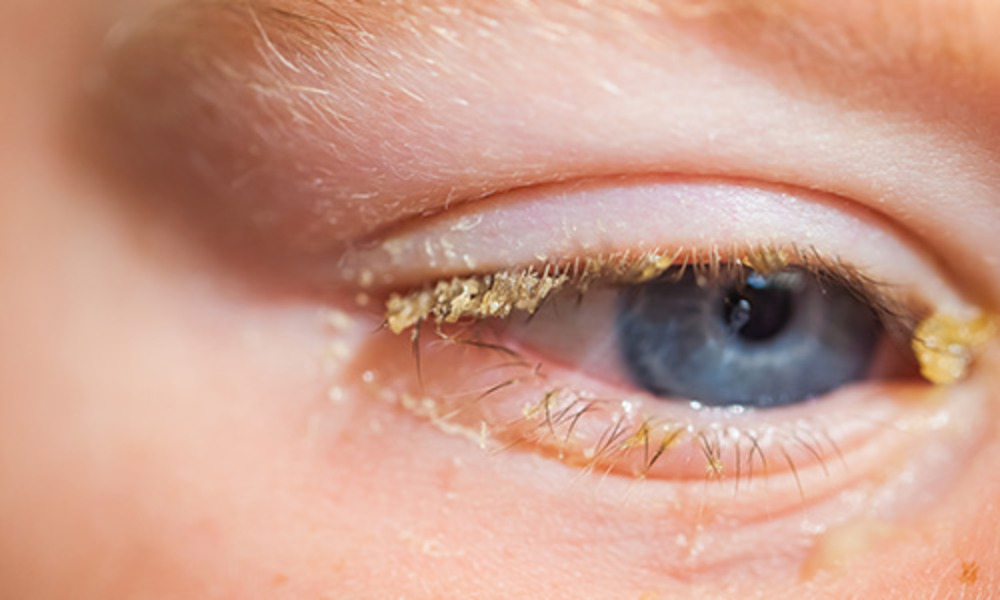
Pink eye, also known as conjunctivitis, is a highly contagious eye infection that can easily spread among infants, toddlers, and other family members. Understanding the contagious nature of pink eye is essential to preventing its transmission and protecting the health of those around the infected individual.
How does pink eye spread?
Pink eye can spread through direct contact with infected eye secretions, such as discharge or tears, or through indirect contact with contaminated surfaces or objects.
The most common mode of transmission is hand-eye contact, where the infection is transferred from the infected person’s hands to their eyes or to others via direct contact.
Contagiousness and transmission period
The contagious period for pink eye depends on the underlying cause. In the case of viral pink eye, it is highly contagious even before symptoms appear and can remain contagious for as long as two weeks after symptoms subside.
Bacterial pink eye is also contagious until 24 hours after starting antibiotic treatment. Moreover, allergic and chemical irritant conjunctivitis are not contagious.
Preventing the spread
To prevent the spread of pink eye, it is crucial to practice good hygiene and follow preventive measures:
1. Wash hands regularly and thoroughly with soap and water, especially after touching the infected eye or its secretions.
2. Avoid touching or rubbing the infected eye to minimize the risk of spreading the infection.
3. Use separate towels and tissues for each family member to prevent cross-contamination.
4. Avoid sharing personal items such as pillowcases, eye makeup, or contact lenses.
5. Clean and disinfect surfaces and objects that may come into contact with the infected eye.
6. Encourage children to practice proper hand hygiene and avoid touching their eyes.
By following these preventive measures, the risk of spreading pink eye can be significantly reduced, safeguarding the health of the whole family and preventing further infections. If pink eye symptoms persist or worsen, it is advisable to seek medical attention for appropriate diagnosis and treatment.
References:
American Academy of Ophthalmology. (2019). Conjunctivitis: What You Should Know.
Mayo Clinic. (2021). Pink Eye (Conjunctivitis).
Pink Eye Symptoms in Babies and Toddlers

Pink eye, also known as conjunctivitis, is a common eye infection that can affect both babies and toddlers. Recognizing the symptoms is crucial for parents to seek appropriate medical attention and prevent the spread of the infection.
Here are the common signs to look out for:
1. Redness and Irritation
One of the most telltale symptoms of pink eye is redness in the white part of the eye. The affected eye may appear bloodshot and swollen. Babies may rub their eyes frequently or have a hard time opening them.
2. Eye Discharge
The pink eye often causes excessive tearing and a thick, sticky discharge. If you notice your child’s eyes are crusted shut in the morning or throughout the day, it may indicate an infection.
3. Sensitivity to Light
Babies with pink eye may be more sensitive to indoor light or sunlight. They may squint or avoid bright areas.
4. Itching and Irritation
Pink eyes can cause itching and general discomfort in the affected eye. Babies may rub their eyes or fuss more than usual.
5. Watery Eyes
The infection may lead to watery eyes, causing constant tearing and a runny nose. It’s important to distinguish pink eye from common cold symptoms in infants.
If you observe these symptoms in your baby or toddler, it is essential to consult a healthcare professional for an accurate diagnosis and appropriate treatment. The specific type of pink eye, whether viral, bacterial, allergic, or caused by chemical irritants, will determine the course of treatment.
Viral Infection
Viral pink eye, also known as viral conjunctivitis, is a common type of eye infection that affects infants. It is caused by a viral infection, typically the adenovirus, and can easily spread from person to person.
This type of pink eye is highly contagious and can be transmitted through direct contact with infected eye secretions or contaminated surfaces.
Symptoms
Symptoms of viral pink eye in babies often include:
1. Eye redness
The infected eye may appear red and bloodshot, with noticeable inflammation of the conjunctiva.
2. Eye discharge
Infants with viral pink eye may experience watery discharge from the affected eye.
3. Eye itching
Babies may rub their eyes frequently due to itching and discomfort.
4. Light sensitivity
Viral conjunctivitis can cause sensitivity to indoor light and sunlight.
5. Eye swelling
The infected eye may appear swollen and puffy.
Progression
Viral pink eye typically starts in one eye and may later spread to the other eye. The symptoms usually develop within several days after exposure to the virus. It’s important to note that viral pink eye tends to be self-limiting and typically resolves on its own within one to two weeks.
Treatment Options
Since viral pink eye is caused by a virus, antibiotics are not effective for its treatment. Instead, management focuses on relieving symptoms and preventing the infection from spreading. Some helpful measures include:
1. Frequent handwashing
Encourage proper hand hygiene to prevent the spread of the infection.
2. Warm compresses
Applying warm compresses to the affected eye can help soothe discomfort and reduce swelling.
3. Artificial tears
Over-the-counter artificial tears can provide relief from dryness and reduce eye irritation.
4. Antiviral medications
In certain cases, antiviral medications may be prescribed by a healthcare professional to speed up recovery, but they are not commonly used for infants.
If your baby is experiencing symptoms of viral pink eye, it is crucial to consult a healthcare provider. They will provide the most appropriate guidance and recommend the best course of action to manage the infection effectively and ensure your baby’s comfort.
Remember, preventing the spread of pink eye is essential to protect other family members and children. Take preventive measures such as proper hand hygiene, avoiding touching the infected eye, and isolating infected individuals until the infection has cleared.
Bacterial Infection: Symptoms, Complications, and Treatments

Bacterial pink eye, also known as bacterial conjunctivitis, is a common form of eye infection that can affect babies and toddlers. It is caused by various types of bacteria, such as Staphylococcus or Streptococcus, and is highly contagious.
Recognizing the symptoms, understanding potential complications, and seeking appropriate treatments are crucial for managing bacterial pink eye in infants.
Symptoms of Bacterial Pink Eye
- Redness
The white part of the infected eye appears red and swollen.
- Discharge
A yellow or greenish discharge may be present, causing the eyelids to stick together.
- Irritation
Babies may experience itchiness, burning sensations, or general discomfort in their affected eye.
- Sensitivity
Increased sensitivity to light (photophobia) can be observed.
Potential Complications
If left untreated, bacterial pink eye can lead to complications, including:
- Corneal Infection
Bacterial infection can spread to the cornea, the transparent dome-shaped part that covers the front of the eye.
- Vision Issues
Severe cases of bacterial conjunctivitis can potentially impact vision and require prompt medical attention.
- Secondary Infections
Bacteria from the infected eye can spread to other parts of the body, resulting in secondary infections.
Recommended Treatments
Consulting a healthcare professional is essential for accurate diagnosis and treatment of bacterial pink eye in babies. Common treatments include:
- Antibiotic Eye Drops or Ointments
Prescribed antibiotics help combat bacterial infection by killing the responsible bacteria.
- Warm Compresses
Applying a warm compress to the affected eye can help reduce discomfort and alleviate swelling.
- Hygiene Measures
Regularly cleaning the affected eye with a clean cloth or cotton ball can prevent further irritation and reduce the risk of spreading the infection.
Remember, early detection and appropriate treatment can help manage bacterial pink eye effectively and minimize the risk of complications.
Allergies: Causes and Strategies for Management
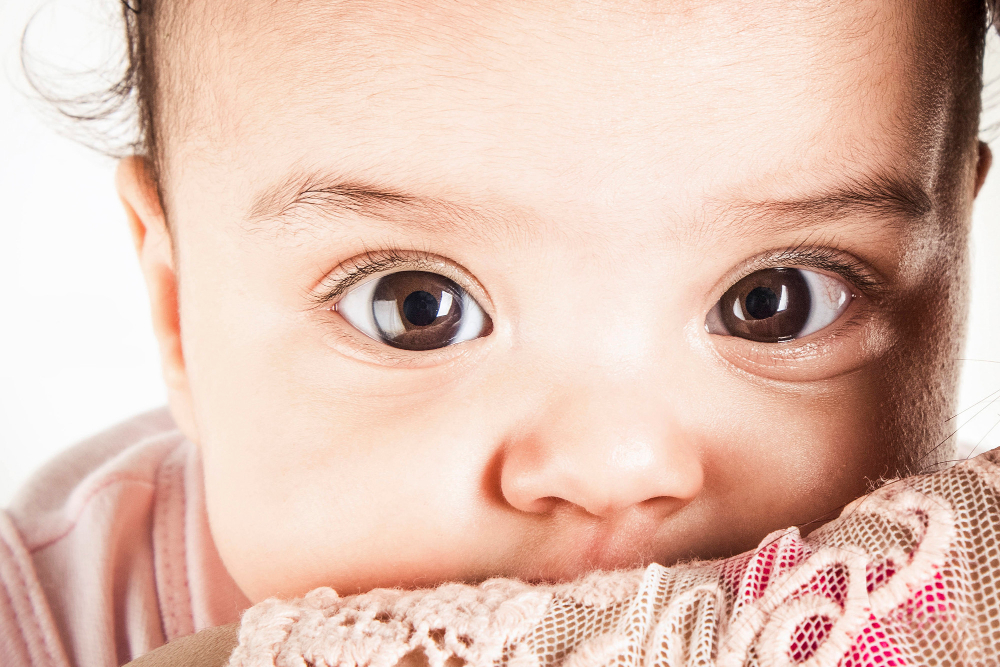
Allergies can be a significant factor contributing to pink eye in infants. When a baby comes into contact with allergens such as pollen, dust mites, or pet dander, their immune system may react and trigger an allergic response in the eyes, leading to pink eye.
It is important for parents to be aware of the symptoms and take appropriate measures to manage and treat allergies to minimize the risk of pink eye.
Symptoms of allergic pink eye may include redness, itching, tearing, and swelling of the eyes. To manage and alleviate these symptoms, parents can follow these strategies:
1. Identify and avoid allergens
Identify the specific allergens that trigger the allergic response in your baby’s eyes and take steps to minimize their exposure. Keep the environment clean, use allergy-proof bedding and pillow covers, and avoid contact with pets or other potential allergenic substances.
2. Gentle eye cleaning
Use a clean, damp cloth to gently clean the baby’s eyes, being careful not to put pressure or irritate the delicate eye area. This can help remove allergens and alleviate discomfort.
3. Cold compresses
Apply cold compresses or chilled artificial tears to reduce inflammation and soothe the eyes. This can provide temporary relief from itching and redness.
4. Consult with a healthcare professional
If symptoms persist or worsen, it is advisable to consult with a pediatrician or an eye specialist. They can provide further guidance and recommend appropriate medications, such as antihistamine eye drops, to manage the allergic response effectively.
By taking these measures, parents can help manage and treat allergic pink eye in infants, ensuring their little ones experience relief and a faster recovery.
Chemical irritants
Chemical irritants can cause pink eye in babies, leading to discomfort and irritation in their delicate eyes. Exposure to substances such as smoke, chlorine from swimming pools, and certain household chemicals can trigger an inflammatory response in the conjunctiva, resulting in a condition known as chemical pink eye.
To alleviate the symptoms of chemical pink eye in babies, it is important to remove the source of irritation and provide immediate relief. Here are some steps you can take:
1. Flush the eyes
Rinse your baby’s eyes gently with clean, cool water to remove any residual irritants. Use a clean cloth or sterile saline solution to dampen and wipe the eyes, taking care not to apply excessive pressure.
2. Avoid rubbing the eyes
Encourage your baby to avoid rubbing their eyes, as this can further exacerbate the irritation and lead to additional discomfort.
3. Use artificial tears
Over-the-counter artificial tears can help soothe and moisturize the eyes, providing relief from dryness and irritation caused by chemical irritants. Consult with your pediatrician before using any eye drops or ointments formulated explicitly for infants.
4. Maintain a clean environment
Ensure that your baby’s surroundings are free from potential irritants. Avoid exposure to cigarette smoke and other substances that can trigger a reaction in their sensitive eyes.
5. Consult a healthcare professional
If your baby’s symptoms persist or worsen, it is essential to seek medical advice. A healthcare professional can assess the severity of the condition and recommend appropriate treatment options.
Remember, prevention is key when it comes to chemical pink eye. Take precautions to limit your baby’s exposure to potential irritants and create a safe and comfortable environment for their eye health.
Treatments for Pink Eye in Babies and Toddlers

When it comes to treating pink eye in babies and toddlers, gentle and effective measures are necessary. Here are some recommended treatments and remedies to help alleviate the symptoms and promote healing:
1. Medications
- Antibiotic eye drops or ointments
If the pink eye is caused by a bacterial infection, your doctor may prescribe antibiotic eye drops or ointments. These medications can help clear the infection and relieve symptoms.
- Antiviral medications
In cases of viral pink eye, antiviral medications may be prescribed to reduce the duration and severity of the infection. These medications can help speed up the healing process.
- Antihistamine eye drops
For pink eye caused by allergies, antihistamine eye drops can provide relief from itching and redness.
2. Home Remedies
- Warm compresses
Applying a warm compress to the affected eye can help soothe discomfort and reduce inflammation. Use a clean, warm washcloth and gently place it over the closed eye for a few minutes at a time.
- Saline solution
Rinsing the eyes with a saline solution can help flush out any irritants and keep the eyes clean. You can use sterile saline or make your own by mixing salt and warm water.
- Avoiding irritants
Take precautions to protect your baby’s eyes from irritants such as smoke, dust, and chemical fumes. Keep the environment clean and well-ventilated.
Proper hygiene practices should be followed to prevent the spread of pink eye. Wash your hands thoroughly before and after applying eye drops or ointments. Avoid sharing towels, bedding, or personal items with the infected child.
If symptoms persist or worsen despite home remedies and over-the-counter treatments, it’s recommended to seek medical advice. Your doctor can provide a more tailored treatment plan for your baby’s specific needs.
Remember, always consult a healthcare professional for an accurate diagnosis and appropriate treatment options for your child’s pink eye.
How long does pink eye last?
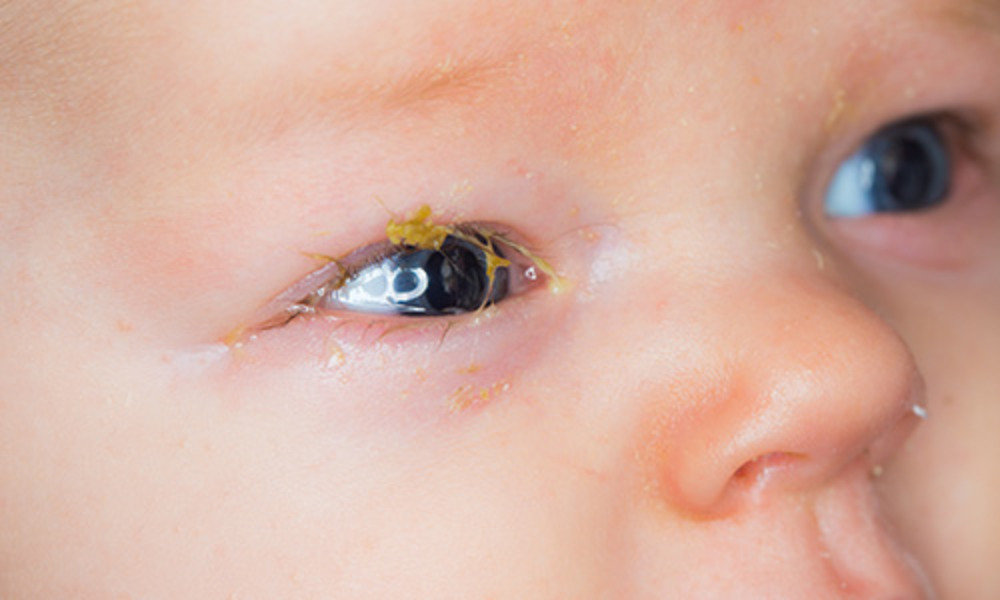
Pink eye, also known as conjunctivitis, can have varying durations depending on the underlying cause. Understanding the typical recovery time for different types of infections can help parents assess the duration of pink eye in babies and toddlers.
Viral infection
- Viral pink eye is the most common type and is typically caused by a viral infection such as a cold or flu.
- In most cases, viral pink eye will resolve on its own within one to two weeks as the body’s immune system fights off the virus.
- Symptomatic relief can be achieved through over-the-counter eye drops and warm compresses.
Bacterial infection
- If the pink eye is caused by bacteria, it is important to seek medical attention for appropriate treatment.
- Bacterial pink eye usually clears up within one to two weeks with the use of antibiotic eye drops or ointments prescribed by a healthcare professional.
Allergic pink eye
- Allergic pink eye results from an allergic reaction to substances such as pollen, pet dander, or dust mites.
- This type of pink eye tends to last as long as the allergen is present.
- Avoiding allergens and using antihistamine eye drops can help alleviate symptoms.
Chemical irritants
- Pink eye caused by chemical irritants, such as exposure to household cleaning products or smoke, can last for a few days.
- If a chemical irritant is suspected, it is important to flush the eyes with clean water immediately.
Remember, the duration of pink eye can vary from case to case, and prompt medical attention is necessary for severe or persistent symptoms. It is always best to consult a healthcare professional for an accurate assessment and appropriate treatment plan.
How do you prevent pink eye from spreading to others in the family and other children?
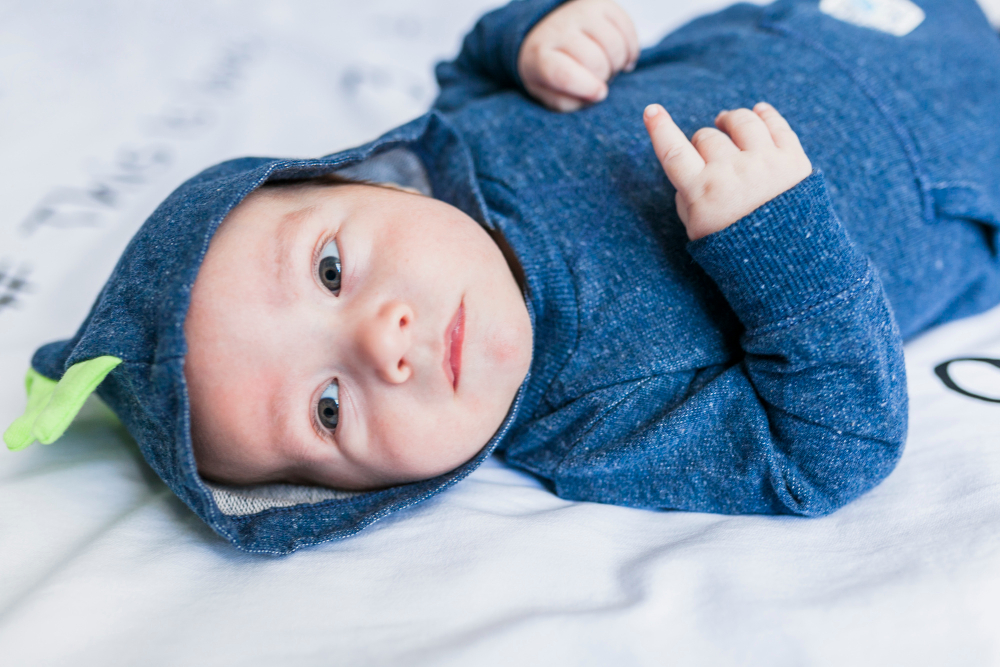
Preventing the spread of pink eye among family members and other children is crucial to contain the infection and protect the well-being of everyone involved. By following some simple hygiene practices and taking necessary isolation measures, you can significantly reduce the risk of transmitting pink eye.
Here are some strategies to implement:
1. Practice proper hand hygiene
- Encourage frequent handwashing with soap and water for at least 20 seconds.
- Teach children to avoid touching their eyes and to cover their mouths and noses when coughing or sneezing.
2. Avoid sharing personal items
- Discourage the sharing of towels, washcloths, pillows, and other personal items that can harbor the infection.
- Teach children not to share eye drops, makeup, or contact lenses with others.
3. Maintain clean surroundings
- Regularly disinfect surfaces that come into frequent contact with hands, such as doorknobs, toys, and electronic devices.
- Launder bedding, towels, and clothing in hot water to kill any potential bacteria or viruses.
4. Isolate infected individuals
- Keep infected children home from school or daycare until their symptoms improve, and their healthcare provider confirms they are no longer contagious.
- Advise against close contact, especially direct eye-to-eye contact, with other household members or children to prevent cross-contamination.
5. Follow proper eye hygiene
- Teach children not to rub their eyes as it can worsen the infection and spread it to other parts of the eye.
- Use a clean, damp washcloth to gently cleanse the affected eye or eyes, starting from the inner corner and wiping outward.
Remember, early recognition and prompt treatment of pink eye can accelerate recovery and minimize the risk of spreading the infection. If symptoms persist or worsen, it is important to consult a healthcare professional for further evaluation and guidance on the appropriate course of treatment.
By implementing these preventive measures, you can safeguard the health of your family and other children from the spread of pink eye.
Can pink eye become more serious? How long does it usually take to clear in babies and toddlers?
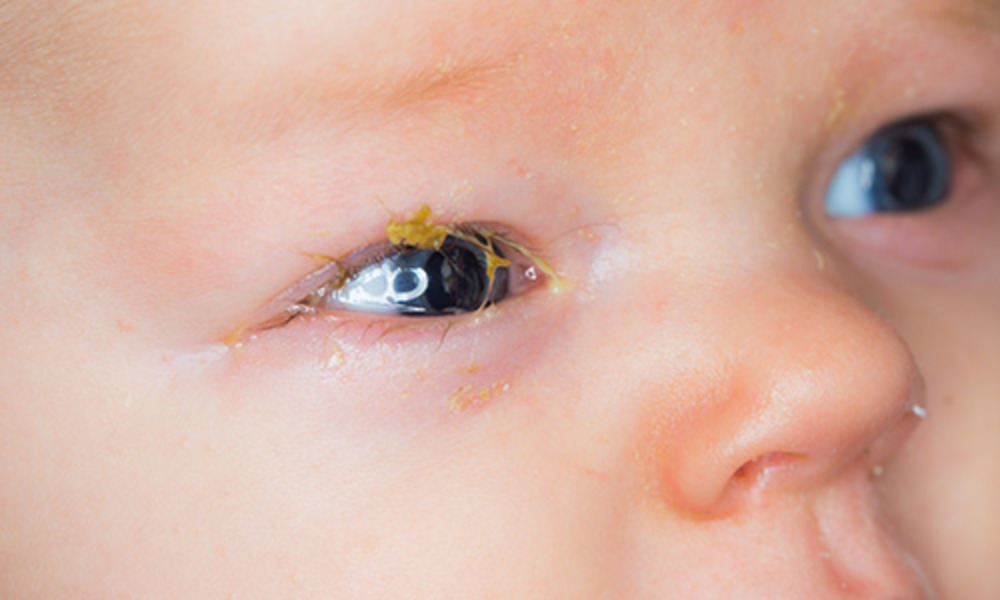
Pink eye, also known as conjunctivitis, is typically a mild and self-limiting condition in babies and toddlers. However, it can occasionally become more serious, especially if left untreated or if the underlying cause is severe. Parents should be aware of the potential complications associated with pink eye in infants.
In some cases, bacterial pink eye can lead to more serious infections if the bacteria spreads beyond the eyes and affects other parts of the body.
For example, untreated bacterial conjunctivitis can lead to sinusitis, ear infections, or even a more systemic infection.
Viral pink eye, on the other hand, is usually a self-limiting condition that resolves on its own within one to two weeks.
However, in certain cases, viral conjunctivitis caused by the herpes virus can lead to more severe complications, such as corneal inflammation or scarring.
The duration of pink eye in babies and toddlers can vary depending on the type of infection. Viral conjunctivitis typically lasts for about one to two weeks, while bacterial conjunctivitis can clear up within a few days to a week with appropriate treatment. Allergic pink eye, caused by allergies, may persist as long as the allergen is present.
Parents should seek medical attention if their baby’s pink eye symptoms worsen, if there is severe eye pain or sensitivity to light, or if the condition persists for an extended period to ensure prompt recovery and prevent complications.
Consulting a healthcare professional can help determine the appropriate treatment and ensure the baby’s overall health and well-being.
Latest Update: How to Treat Pink Eye in Babies
In the ever-evolving field of pediatric ophthalmology, remarkable advancements have been made in the treatment of pink eye in babies. Medical professionals and researchers have made significant discoveries, leading to improved care and outcomes for infants affected by this common eye infection.
If you’re looking for information on how to treat pink eye in babies, you’ll find that there are now more effective and safer treatment options available.
One notable development is the introduction of antiviral medications specifically formulated for infants with viral pink eye. These medications target the underlying viral infection, helping to shorten the duration and severity of symptoms.
Additionally, recent studies have shown promising results in the use of certain eye drops that alleviate discomfort and inflammation associated with bacterial and allergic pink eye.
It’s important to stay informed about these advancements in pink eye treatment to ensure your baby receives the best possible care. Consulting with a pediatrician or an ophthalmologist who specializes in children’s eye health is essential for accurate diagnosis and appropriate treatment options.
By staying updated, parents can make well-informed decisions to safeguard their baby’s eye health and well-being.
FAQs: How to Treat Pink Eye in Babies
Q: What are the common signs of pink eye in babies?
A: Common signs of pink eye in babies include redness in the whites of the eyes, excessive tearing, eye discharge that may be yellow, green, or white, and swelling of the eyelids.
Q: How is pink eye in babies treated?
A: Treatment for pink eye in babies depends on the cause. Viral pink eye often resolves on its own and may only require home remedies. Bacterial pink eye may require antibiotic eye drops or ointments.
Allergic pink eye can be managed with antihistamine eye drops or oral medications, and pink eye due to chemical irritants may improve with the use of soothing eye drops and washing the affected eye with clean water.
Q: Is the pink eye in babies contagious?
A: Yes, pink eye in babies can be highly contagious, especially if it is caused by a viral or bacterial infection. It can easily spread through direct or indirect contact with infected eye secretions.
Q: How can I prevent the spread of pink eye in babies?
A: To prevent the spread of pink eye in babies, it’s important to practice good hygiene, such as washing hands frequently, avoiding touching the eyes, and not sharing towels, pillows, or other personal items. Additionally, keeping infected babies away from daycare or school until they are no longer contagious can help prevent the spread of pink eye.
Q: When should I seek medical attention for pink eye in my baby?
A: It’s important to seek medical attention if you suspect your baby has pink eye, especially if they are experiencing severe symptoms, the condition is not improving, or if there is a possibility of a bacterial infection. A healthcare professional can provide an accurate diagnosis and recommend appropriate treatment.

